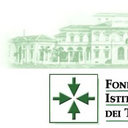Tumor necrosis factor triggers redistribution to a Triton X-100-insoluble, cytoskeletal fraction of beta 2 integrins, NADPH oxidase components, tyrosine phosphorylated proteins, and the protein tyrosine kinase p58fgr in human neutrophils adherent to fibrinogen.
Cuvinte cheie
Abstract
Tumor necrosis factor (TNF) triggers cell spreading, release of granule constituents, and production of toxic oxygen derivatives in human neutrophils adherent to fibrinogen. This response requires cytoskeleton reorganization and is dependent on expression of beta 2 integrins. We analyzed distribution of distinct proteins in Triton X-100-soluble and insoluble fractions in neutrophils adherent to fibrinogen. We found that stimulation of adherent neutrophils with TNF causes the redistribution to a Triton-insoluble fraction of alpha-actinin, beta 2 integrins, and the four components whose assembly constitutes an active NADPH oxidase: the gp91-phox, p22-phox, p47-phox, and p67-phox proteins. Redistribution of these different proteins to a Triton-insoluble fraction took relatively long times and was maximal after about 30 min of stimulation with TNF. Prevention of actin polymerization with cytochalasin B hampered the TNF-induced redistribution of these proteins from a Triton-soluble to an insoluble fraction. In addition, tyrosine phosphorylated proteins and the protein tyrosine kinase p58fgr were recovered in this Triton-insoluble fraction. These findings show that stimulated, beta 2 integrin-dependent adhesion of neutrophils to fibrinogen is accompanied by redistribution to cytoskeletal structures of (1) beta 2 integrins, that is, neutrophil receptors for fibrinogen; (2) proteins involved in neutrophil effector functions, that is, components of NADPH oxidase; and (3) tyrosine phosphorylated proteins and the protein tyrosine kinase p58fgr, molecules that are potentially involved in the formation of a submembranous signaling complex.


